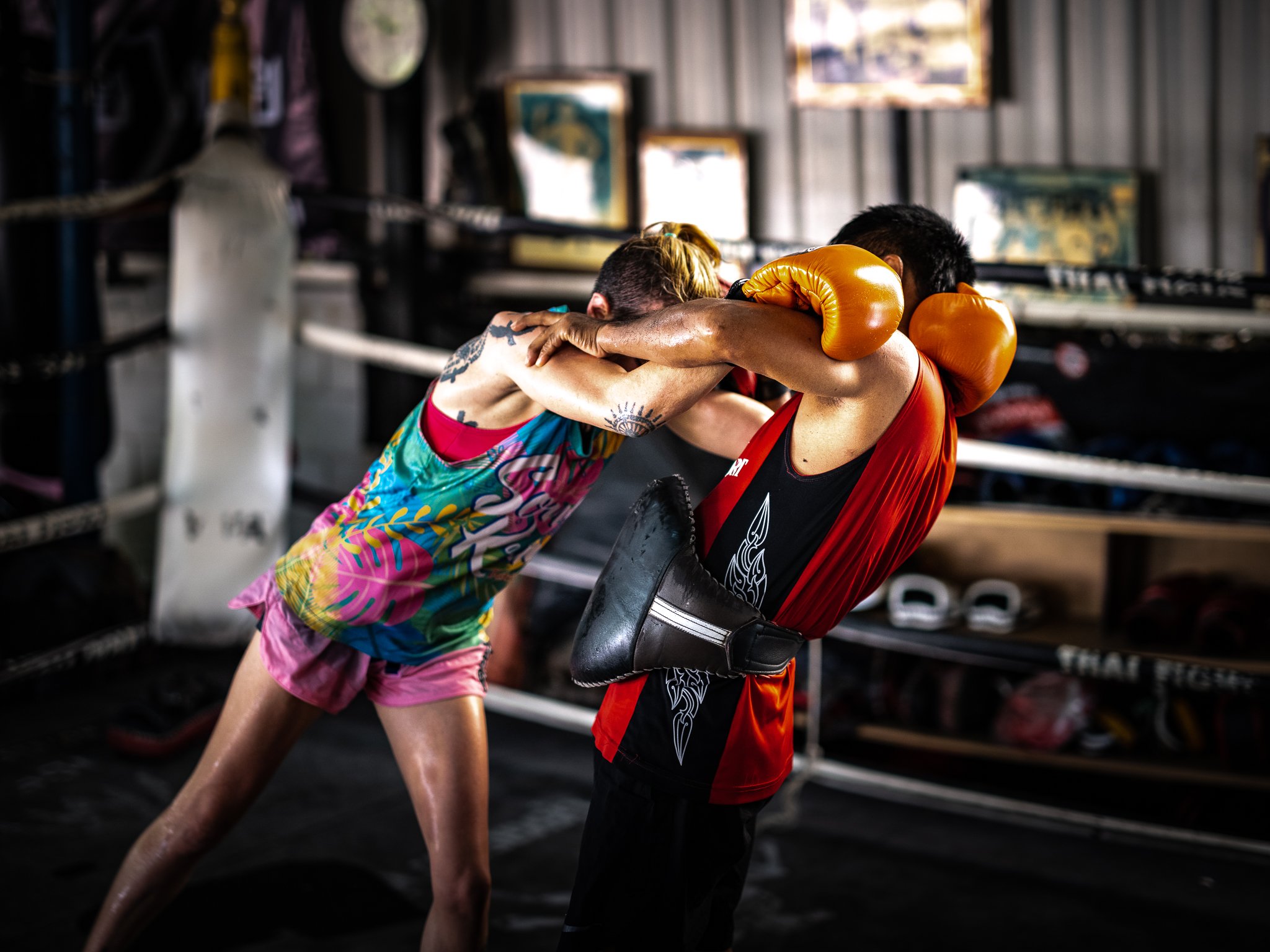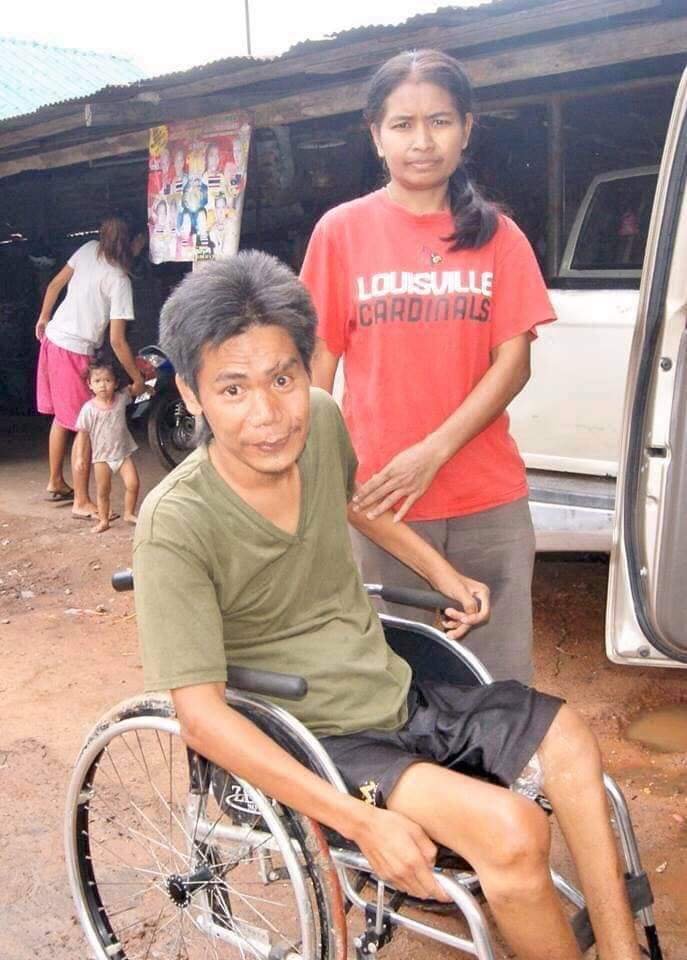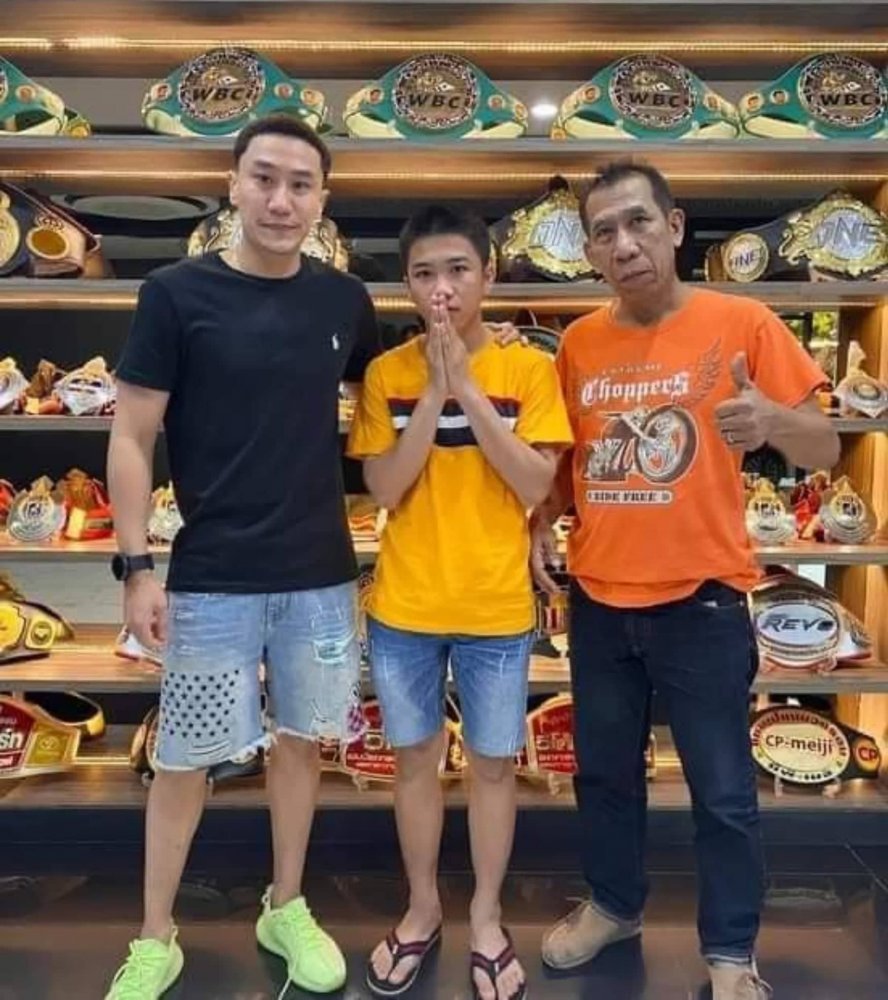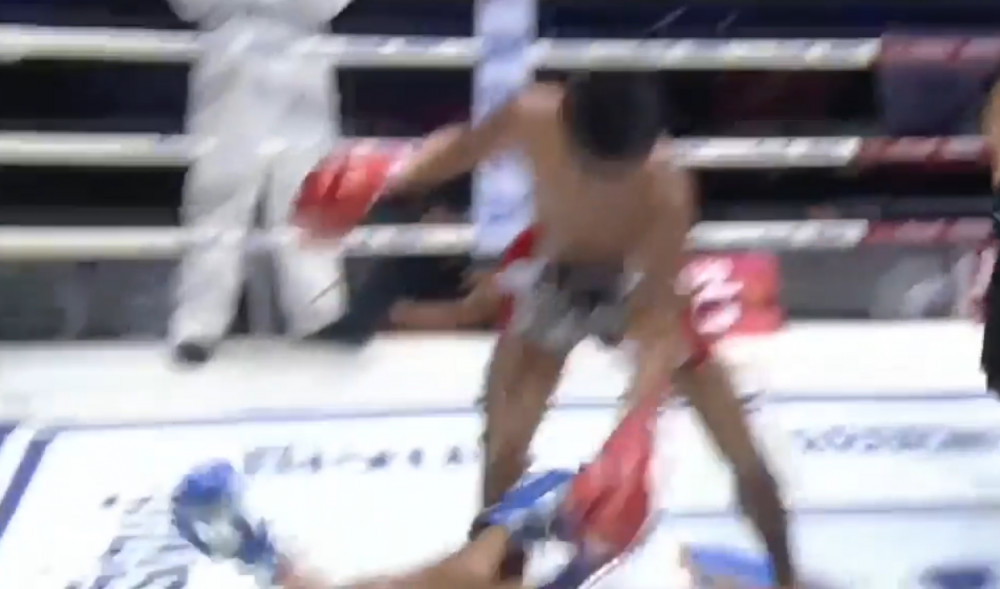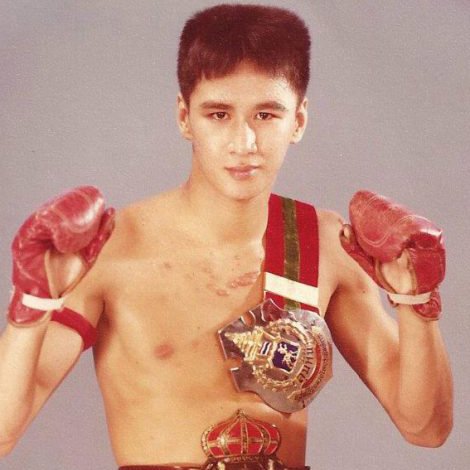-
Posts
1,191 -
Joined
-
Days Won
388
Everything posted by Sylvie von Duuglas-Ittu
-
This post cannot be displayed because it is in a password protected forum. Enter Password
-
This is a further update on this story, summing up what I've gotten from Thai news: Sia Boat has proceeded in bringing charges against Fahwanmai (the fighter) and Udom Chalee (who paid for the thrown fight), which according to Thai law carries a prison sentence of no more than 5 years, and/or a fine of no more than 100,000 Baht (around $3000). Fahwanmai has given an account of how contact was first made with him (it's unclear, but sounds like there was a middle-man in this deal) by a man purchasing a food item that Fahwanmai sells and ships. The man purchased 2400 Baht worth of the food item and overpaid for it with a total of 5000 Baht. On his next order, he said not to waste money packaging and sending the goods, he'd come pick them up himself from Fahwanmai. They spoke on that day when he visited his home, casually, the man asking about any upcoming fights and how Fahwanmai's training was going. He didn't mention any deal at this point. Sometime after this, he contacted Fahwanmai again and told him it would be "better if you couldn't win" in his upcoming fight against Lahnyamo, suggesting he fight for real for 3 rounds and then go down in the 4th, which is exactly as it happened. According to Fahwanmai's testimony, the contact said he'd pay 30,000 Baht upfront (which he transferred on the day of the fight) and the remaining 470,000 Baht after. If Fahwanmai decided not to accept the deal it was "mai bpen rai," (no problem) but he couldn't tell anyone about the offer, carrying with it a threat that he knows where Fahwanmai lives, since he'd just come by to pick up the order of condiments he'd purchased in their second meeting. So, initially Fahwanmai had said he took the deal under threat of physical attack and not for the money, but in his testimony here he's claiming the threat of bodily hard was not for not taking the offer, but if he told anyone about it. After giving his testimony he begged Sia Boat to not send him to prison because he wants to work to take care of his mother and grandmother, and even asked for a now third chance to fight for Sia Boat again. Comments online have been making fun of this request, some quite harshly. Dieselnoi joked that if Sia Boat were to give Fahwanmai another chance he'd do well to change his fight name to "ai dek hia" which is a pretty rude way of saying "Little Bastard." The case is ongoing and Sia Boat has made no official statements other than that he is pressing forward with the charges and his interests are in protecting the Muay Thai Community from anyone who seeks to do it harm. above, Fahwanmai giving his story of events above, This photo is a television interview with both Fahwanmai and Sia Boat. Fahwanmai is asking for forgiveness and to not go to jail. Sia Boat said that prison is his karma for the choices he made and for the matter of fighting again, it would be a very difficult ask for anyone to trust him again. He has admitted to throwing 4 fights in his career as a fighter, fighting since he was a boy.
-
You can see the phantom "knockout" elbow here Just a quick synopsis of the "Lohm Muay" story, from what I picked up watching the story in Thai. Fahwanmai, whose name means "sky of a new day" was taken under Sia Boat's wing after he great deal of money gambling on a fight that Sangmanee lost. Sia Boat paid off the debt and took Fahwanmai in (named him as well) to the very powerful Petchyindee gym where he has become an internet celebrity and fighter since. He's fought maybe 4-5 times for Petchyindee and most recently against Lahnyamo Wor. Wattana in a televised show in Buriram. Fahwanmai was winning rounds 1-3 and then suddenly going into round 4 the odds suddenly shifted to favor Lahnyamo (5/2). Then in that round it looked like Fahwanmai suddenly couldn't handle his opponent and he was knocked out by an elbow, leaving him writhing on the canvas. Slow motion replay showed the elbow barely grazed him and the cries of a thrown fight were immediately circulating online. There is video of Sia Boat calling on the phone and Fahwanmai backstage swearing he didn't throw the fight. By the next day he had written a confession and named both who hired him and the price (500,000 baht with 30,000 of it up front). Sia Boat then went live for an hour on Facebook and detailed the situation (with more than 20,000 viewers), as well as naming the culprit as Udom Chalee (pictured below), the former head of a gym who 25 years ago paid a fighter named Chalamkaw to throw a fight, ruining his career as a fighter in a very famous case. Now Chalee owns and runs a buffalo farm in Nakhon Naiyok. Sia Boat intends to prosecute both Udom Chalee and Fahwanmai with a hoped result of jail time for both. He has also divulged that another fighter on a recent card was offered to take a dive but refused, told Sia Boat, won his fight and Sia boat has given the gambler the option to turn himself in for a light punishment or else if he doesn't come forward Sia Boat intends to prosecute him fully as well. Gambling in Muay Thai is at the forefront of "politics" at the moment and, while circumstantially legal, in a Buddhistic culture it is a morally loaded topic. above: Sia Boat Petchyindee, Fahwanmai and Udom Chalee previously If you want the latest in Muay Thai happenings read our Muay Thai Bones Newsletter
-
In my experience, strikes are more powerful when they're relaxed and not "trying to be hard." Trying to control power usually tenses up the limbs and makes you both less able to control them and too slow and too light. Loose, relaxed and still fast but controlling the impact. "Letting your strikes go," is almost always a trying less "hard" and being relaxed.
-
This could be something to ask directly to the gym, as they have members who live on premises as well as some who are farther away. But most places have small markets nearby, regardless of where you are. If you're near a Wat (Temple) there's certainly a night market or morning market nearby. In general, Chiang Mai is a very easy city to get around, either by motorbike, bicycle, or public transportation (although I'm not sure how that's getting on with Covid).
-
This post cannot be displayed because it is in a password protected forum. Enter Password
-
For me the trickiest part of shadow kicks is that a target actually interrupts the overall trajectory, so not hitting anything kind of makes the balance difficult. If your kicks on pads and the bag are fine, I recommend kicking a few times, then just back up so you "miss" the target and try to throw your kick exactly the same as when you hit the target and see what that looks/feels like. Then you can recreate it and do it a gazillian times.
-
This post cannot be displayed because it is in a password protected forum. Enter Password
-
I love that you're learning so much from the Library. That's awesome and exactly what we hope for out of the project, in addition to Preserving the Legacy. Exposure to different ideas and methods is food for growth for sure. But you also aren't going to meet many coaches who want their methods questioned or argued against, INCLUDING the men in the Library, Some are more open to ideas than others, but everyone corrects toward their own experience. Your post is posing a question - "should I move to another gym?" - but it's also expressing frustration. I see why you're frustrated, but I have to be blunt here: you might be bringing all these frustrations with you to another gym. Arguing with your trainer over "his way" and what you are learning in the Library will probably be true in 90% of the gyms you go to, unless your coach happens to be a patron or something. There are gym politics that are incredibly consistent. And the issue with no advanced only classes is likely a commercial or practical change, one that your gym is unlikely to abandon unless there are commercial and practical reasons to have the higher level classes. If you feel like you aren't getting what you need out of your gym, that's as good a reason to move as any you'll come across, other than a falling out or something, which is a much harder condition to leave under. But I do warn you that much of what you're finding dissatisfying will be true across many other gyms you might be able to move to. If you see a gym that has more heavyweights, that's beneficial. If you find a gym where it's easier to smile and nod to a correction from your coach and then wait for him to walk away before commencing your own experiments, that's helpful; but arguing with your coaches over technique will never be a welcome approach in any gym. I face this myself; I am more restrained during padwork and have to make an adjustment toward what a coach is saying whenever they say it, but I don't argue. I smile, nod, give it a try while they're watching and then be more experimental during my own shadow, bagwork, or sparring/clinching time.
-
I reckon this is a two part issue, the first being timing (if you're a bit slow on the teep you end up "fluffing," as I call it, kind of dragging your toe down the crotch area. So, work timing on a swinging bag and put a piece of tape or something to keep hitting the same target. The second part is your standing leg. If you're too far inside the opponent's stance when you throw a leg kick or a teep, you can't control your accuracy and it's just a Hail Mary guess where it will land. For a an inside leg kick, you need to have your standing leg outside the opponent's stance. For a teep, if you're too flat-footed OR too much on your toe you can't control your hip for the height of the target.
-
You look good, the flat-footed critique is true but it's on a spectrum, you come up on your toes on strikes which is already good, it's just the in-between that needs a bit more flexibility, but that will come in time. Your punches are mostly coming from your arms rather than twisting from hips/torso, but the flexibility in your feet will help with that over time automatically. Your pace is nice. Powerful, relaxed, but not slow.
-
It's difficult because your coach, it appears, is the gatekeeper on whether or not you get to fight the fight that's offered. Having an honest conversation with him about your motives and goals, that you're willing to take losses and disadvantages in order to have the long-term benefits of experience is a good place to stand. From his perspective, he's trying to protect you, not put you in unfair situations, and also surely protect his own reputation. It's all in how you sell it, honestly. I lost a good amount when I first came to Thailand and was fighting far more experienced opponents with weight advantages, but I was known as the little farang who would fight everyone and fight often. That glow isn't universal, the praise isn't unanimous, and the better I got and the more my name became recognizable, the more complicated the "face" of my gym and those who were supposed to be "in charge of me" became. So, it's complicated. But if you feel like you can talk to your coach, there's nothing lost by an honest conversation about wanting to fight a lot at this point in your development.
-
There's a fighter out here in Pattaya named "Big Mike," occasionally just Mike. He's over 250 lbs, definitely a "heavyweight" not just in Thailand but anywhere. He can move, man. He usually fights on a more local circuit because at that size it's very hard to find opponents in Thailand, but he's had some big side-bet fights at Lumpinee as well. He's awesome. I'm including some short video of his sparring, just to give a flavor for how he goes about it with someone much smaller. Keeping in mind that this is likely for the benefit of the smaller guy, who definitely doesn't share Mike's skill or experience, but Mike is still getting something out of it himself and his fakes, feints, blocks, snuffing and closing of distance is, to me, quite beautiful and looks good for anyone sparring.
-
Kevin and I were talking about this over breakfast this morning and I noted that the narrative form of scoring in Western sport certainly used to be more present. There's no way a 25 round boxing match was a round-by-round mathematical tabulation of points. Bullshit. But as the narrative disappeared, fights became shorter, sportsman became spokesman, the narrative was extracted. So you get things like WWE, contemporary boxing beefs, MMA, all the shit-talking that's outside of the ring, outside the fight, prior to the event in order to give it structure and context within the fight itself. There's no narrative within the ropes, so it's constructed outside of it instead. Aside from scoring, apart from scoring, but rather how the audience will be divided to cheer one way or the other - not based on what they're looking at, but WHO they're looking at. Thailand's Muay Thai has Legends, heroes, icons, playboys... all of it. But it's not part of the narrative of the fights, almost ever. There are grudge matches, rematches, etc. But it's not at all the same as these examples in Western sport; the narrative is within the fight itself. They're fucking amazing story-tellers, back in the day. Less so now.
-
A number of the fighters we interview talk about lack of opponents, the lower frequency of fights makes training and cutting weight much more difficult, an overall feeling that they're "done" in the sense of just not feeling as strong or willing to go through the intense fatigue and work that's required to be a top fighter; some get distracted after reaching a top level - Kaensak was Fighter of the Year for 2 years in a row, then started losing at a high rate just after. I asked him why and he said he had a girlfriend and spent all his time with her rather than focused on training (usually this is a soft implication to a fighter becoming sexually active, as this whole men-have-to-abstain-in-order-to-have-power belief is STRONG here). Some just lose the passion. Most I've talked to talk about just being tired. If they're at the top level, even in their mid or late 20s they're facing rising stars in their late teens or early 20s; that's hard. It's pretty crazy that Suk fought into his 50s and Wichannoi and Chamuakpet were downright old men, retiring in their 30s. Saenchai is a fogie by Muay Thai standards. If we're talking about women it's a completely different story. Yes, lack of opponents but from a much, much smaller pool. Hormones change and the body changes. Women retire much earlier. Some go to school to get a career so they can support their families because there's no such thing as a female fighter who is earning what even mid-level male fighters earn. Women have children pretty young here (male fighters also start families but that's obviously a different process). Lommanee is the oldest female fighter (Thai) I can think of, at 31. Sawsing at 24 is unusual, for sure... and a mother as well.
-
This post cannot be displayed because it is in a password protected forum. Enter Password
-
This post cannot be displayed because it is in a password protected forum. Enter Password
-
Posting my Playlist here in the forum. It contains all the publicly published videos of my work in the Diamond Guard, a Playlist that will be added to as it developes: The Muay Thai Diamond Guard is an evolution of the old time Western Boxing Cross-Armed guard, as used by fighters like Gene Fullmer and Archie Moore (among others), but adopted to the ruleset of traditional Muay Thai. It was first taught to me by the legendary Thai fighter Kaensak Sor. Ploenjit, but I've started to work with it on my own as a side project. This playlist is a collection of some of that work and references.
-
Hey! I recognize your handle from Youtube. Andy Thomson was the first to really emphasize the importance of ambidextrous training to me. Not to fight as a switching fighter, but just to be balanced. I love that you're taking meaning in training both sides and truthfully speaking, everyone has a "weak side" and quite honestly it's much weaker in most people than is necessary. Your workout sounds solid and will develop as you go, but just feel where you're struggling and push the line a little. Then a little, then a little. It's awesome.
Footer title
This content can be configured within your theme settings in your ACP. You can add any HTML including images, paragraphs and lists.
Footer title
This content can be configured within your theme settings in your ACP. You can add any HTML including images, paragraphs and lists.
Footer title
This content can be configured within your theme settings in your ACP. You can add any HTML including images, paragraphs and lists.
